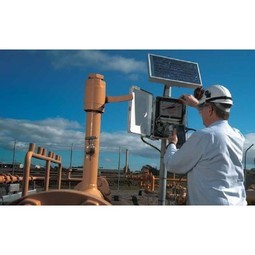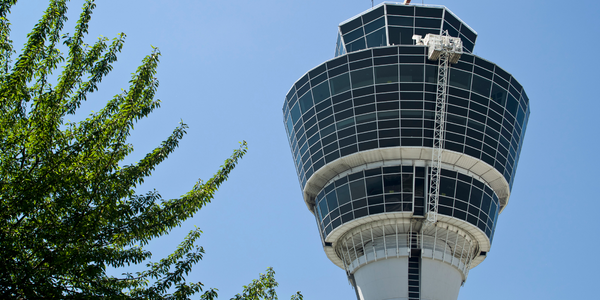Customer Company Size
Large Corporate
Country
- United States
Product
- Google Earth Engine
- Google Cloud
- Carbon Sense suite
- Google Cloud's Carbon Footprint tool
Tech Stack
- AI
- Machine Learning
- Geospatial Analytics
- Cloud Technologies
Implementation Scale
- Enterprise-wide Deployment
Impact Metrics
- Environmental Impact Reduction
- Cost Savings
- Innovation Output
- Productivity Improvements
Technology Category
- Analytics & Modeling - Predictive Analytics
- Analytics & Modeling - Big Data Analytics
- Platform as a Service (PaaS) - Data Management Platforms
Applicable Industries
- Recycling & Waste Management
- Transportation
- Utilities
Applicable Functions
- Business Operation
- Logistics & Transportation
Use Cases
- Fleet Management
- Predictive Maintenance
- Remote Asset Management
- Supply Chain Visibility
Services
- Cloud Planning, Design & Implementation Services
- Data Science Services
- System Integration
About The Customer
The article discusses various companies and organizations leveraging AI and cloud technologies to address climate change challenges. These include Google, which is using its Earth Engine for global monitoring of deforestation and marine activities, and companies like Palo Alto Networks, HSBC, and Swiss Re, which are using Google Cloud to measure carbon emissions, assess climate risks, and optimize operations. The article also highlights partnerships with organizations like the Forest Data Partnership and Global Fishing Watch, which use geospatial analytics to monitor environmental impacts. These companies are large corporates with a global presence, focusing on sustainability and environmental impact reduction.
The Challenge
Climate change is a significant challenge that requires innovative solutions to drive impact at a global scale. The need to process vast volumes of data generated by various industries is crucial for making better decisions about climate mitigation and adaptation. The combination of AI and cloud technologies offers the potential to unlock solutions that can be transformational and global in scale. Examples include monitoring deforestation risks, understanding human impact on seas, and optimizing business operations for sustainability.
The Solution
The solution involves using AI and cloud technologies to process large volumes of data, optimize complex systems, and develop new business models. Companies are using AI-powered insights to monitor sustainability targets, de-risk investments, and improve transparency. Examples include Palo Alto Networks tracking carbon emissions, HSBC using a credit ranking tool for climate risk scenarios, and Swiss Re using AI for flood modeling. Additionally, businesses are optimizing operations and supply chains for energy efficiency and cost reduction, as seen with Geotab managing data for fleet vehicles. Companies are also identifying cleaner business models, such as Recykal's circular economy marketplace and Einride's electric, self-driving vehicles. Finally, businesses are building more sustainably by using tools like Google Cloud's Carbon Footprint tool to track emissions and implement strategies to reduce their environmental impact.
Operational Impact
Quantitative Benefit

Case Study missing?
Start adding your own!
Register with your work email and create a new case study profile for your business.
Related Case Studies.

Case Study
IoT Solutions for Smart City | Internet of Things Case Study
There were several challenges faced: It is challenging to build an appliance that can withstand a wide range of voltage fluctuations from as low at 90v to as high as 320v. Since the device would be installed in remote locations, its resilience was of paramount importance. The device would have to deal with poor network coverage and have the ability to store and re-transmit data if networks were not available, which is often the case in rural India. The device could store up to 30 days of data.

Case Study
Automation of the Oguz-Gabala-Baku water pipeline, Azerbaijan
The Oguz-Gabala-Baku water pipeline project dates back to plans from the 1970’s. Baku’s growth was historically driven by the booming oil industry and required the import of drinking water from outside of the city. Before the construction of the pipeline, some 60 percent of the city’s households received water for only a few hours daily. After completion of the project, 75 percent of the two million Baku residents are now served around the clock with potable water, based on World Health Organization (WHO) standards. The 262-kilometer pipeline requires no pumping station, but uses the altitude differences between the Caucasian mountains and the capital to supply 432,000 m³/d to the Ceyranbatan water reservoir. To the people of Baku, the pipeline is “the most important project not only in 2010, but of the last 20 years.”

Case Study
GPRS Mobile Network for Smart Metering
Around the world, the electricity supply industry is turning to ‘smart’ meters to lower costs, reduce emissions and improve the management of customer supplies. Smart meters collect detailed consumption information and using this feedback consumers can better understand their energy usage which in turn enables them to modify their consumption to save money and help to cut carbon emissions. A smart meter can be defined in many ways, but generally includes an element of two-way communication between the household meter and the utility provider to efficiently collect detailed energy usage data. Some implementations include consumer feedback beyond the energy bill to include online web data, SMS text messages or an information display in consumers’ premises. Providing a cost-effective, reliable communications mechanism is one of the most challenging aspects of a smart meter implementation. In New Zealand, the utilities have embraced smart metering and designed cost effective ways for it to be implemented. The New Zealand government has encouraged such a move to smart metering by ensuring the energy legislation is consistent with the delivery of benefits to the consumer while allowing innovation in this area. On the ground, AMS is a leader in the deployment of smart metering and associated services. Several of New Zealand’s energy retailers were looking for smart metering services for their residential and small business customers which will eventually account for over 500,000 meters when the multi-year national deployment program is concluded. To respond to these requirements, AMS needed to put together a solution that included data communications between each meter and the central data collection point and the solution proposed by Vodafone satisfied that requirement.

Case Study
Airport SCADA Systems Improve Service Levels
Modern airports are one of the busiest environments on Earth and rely on process automation equipment to ensure service operators achieve their KPIs. Increasingly airport SCADA systems are being used to control all aspects of the operation and associated facilities. This is because unplanned system downtime can cost dearly, both in terms of reduced revenues and the associated loss of customer satisfaction due to inevitable travel inconvenience and disruption.

Case Study
NB-IoT connected smart meters to improve gas metering in Shenzhen
Shenzhen Gas has a large fleet of existing gas meters, which are installed in a variety of hard to reach locations, such as indoors and underground, meaning that existing communications networks have struggled to maintain connectivity with all meters. The meter success rate is low, data transmissions are so far unstable and power consumption is too high. Against this background, Shenzhen Gas, China Telecom, Huawei, and Goldcard have jointly trialed NB-IoT gas meters to try and solve some of the challenges that the industry faces with today’s smart gas meters.

Case Study
IoT-based Fleet Intelligence Innovation
Speed to market is precious for DRVR, a rapidly growing start-up company. With a business model dependent on reliable mobile data, managers were spending their lives trying to negotiate data roaming deals with mobile network operators in different countries. And, even then, service quality was a constant concern.







